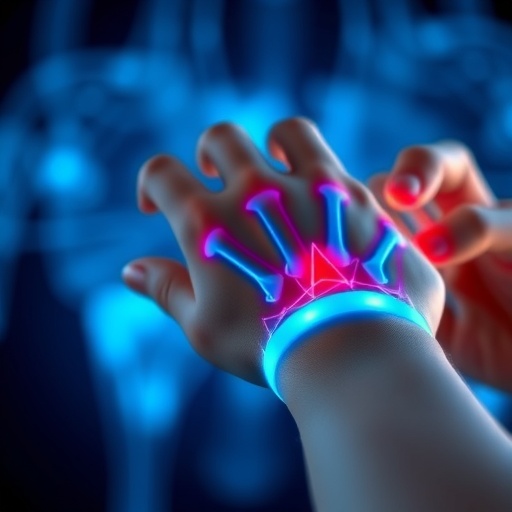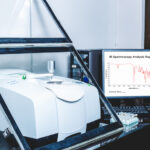
In recent years, the convergence of wearable sensor technology and advanced computational techniques has heralded a new era in the management and understanding of neurodegenerative diseases. Now, a groundbreaking study by Gupta and Patel, published in npj Parkinson’s Disease in 2025, unveils how wrist-worn accelerometry devices combined with sophisticated machine learning algorithms can offer unprecedented sensitivity in detecting and tracking disease progression during the elusive prodromal phase of Parkinson’s disease. This study represents a paradigm shift, providing hope for earlier interventions and more tailored therapeutic strategies in a disease that has long challenged clinicians due to its insidious onset and heterogeneous symptomatology.
Parkinson’s disease, a progressive neurodegenerative disorder characterized primarily by motor dysfunction such as tremor, rigidity, and bradykinesia, affects millions worldwide. Historically, diagnosis has relied heavily on clinical observation of motor symptoms, by which time significant neuronal loss has already occurred. The prodromal phase—a silent precursor stage marked by subtle non-motor and motor changes—has remained difficult to quantify accurately, hindering early intervention efforts. Gupta and Patel’s work harnesses continuous, objective data from wrist accelerometers, devices capable of capturing nuanced motor activity patterns in daily life with high temporal resolution, enabling insights previously inaccessible through traditional clinical assessments.
Accelerometry, the measurement of acceleration forces that propose movement characteristics, has been increasingly integrated into wearable technology aimed at health monitoring. The wrist, given its extensive mobility and ability to reflect fine motor activity, emerges as an ideal anatomical site for such sensors. However, raw accelerometer data alone are overwhelmingly complex, varying with numerous factors including context of movement and individual behavior. Gupta and Patel addressed this challenge by developing machine learning frameworks able to disentangle pathological motor signatures from normal activity variations. Their models leverage rich datasets encompassing a broad spectrum of movement features, extracting latent biomarkers predictive of disease progression.
.adsslot_D4EluZwSgy{ width:728px !important; height:90px !important; }
@media (max-width:1199px) { .adsslot_D4EluZwSgy{ width:468px !important; height:60px !important; } }
@media (max-width:767px) { .adsslot_D4EluZwSgy{ width:320px !important; height:50px !important; } }
ADVERTISEMENT
Crucially, this study deployed longitudinal monitoring in individuals at risk for Parkinson’s disease, capturing early motor irregularities before standard diagnostic criteria would typically apply. By employing supervised learning techniques trained on labeled datasets including confirmed cases and healthy controls, the algorithms demonstrated remarkable accuracy in distinguishing prodromal cases and tracking individualized progression trajectories over time. This sensitivity not only facilitates earlier diagnosis but also offers a quantitative measure to evaluate subtle changes, a tool of immense value for clinical trials assessing disease-modifying therapies.
One of the technical triumphs highlighted in the paper is the integration of multi-dimensional time series data obtained from wrist accelerometers with machine learning classifiers optimized for high-dimensional feature spaces. By implementing feature engineering strategies that quantify gait dynamics, tremor amplitude and frequency patterns, and periodicity of movements, the study advances beyond traditional motor assessments. The authors also explored ensemble learning and cross-validation approaches to enhance robustness and generalizability of predictive models, ensuring their applicability across diverse populations and everyday environments.
Beyond the detection of motor symptoms, the study discusses potential correlations between accelerometric features and underlying neuropathological changes. While the exact neuropathological correlates remain an area for future investigation, subtle alterations in motor coordination and tremor rhythms captured by wearable sensors may reflect progressive dopaminergic neuronal loss in regions like the substantia nigra. As such, the technology opens avenues for more granular phenotyping of Parkinson’s disease subtypes, potentially identifying patients with distinct progression profiles or responses to therapy.
Importantly, Gupta and Patel emphasize the user-friendly nature and cost-effectiveness of wrist accelerometry devices, which supports their feasibility for widespread clinical deployment. Unlike cumbersome or expensive imaging modalities or invasive biomarkers, wrist-worn sensors can easily be incorporated into patients’ daily lives, allowing continuous, passive monitoring. This approach transforms Parkinson’s disease management from episodic clinical snapshots to dynamic, real-world assessments, facilitating timely clinical decision-making and personalized intervention adjustments.
The paper also addresses the challenges in dealing with large-scale sensor data, including noise, missing data points, and variability caused by patient compliance or environmental factors. The authors implemented data preprocessing pipelines that include filtering algorithms, normalization techniques, and quality control measures, ensuring reliability of the input to machine learning models. Such methodological rigor strengthens the confidence in the derived digital biomarkers and accentuates the importance of multidisciplinary expertise in clinical, engineering, and data science domains.
Ethical considerations surrounding continuous monitoring and data privacy arise naturally with sensor-based health technologies. The study briefly outlines protocols for secure data handling and anonymization, acknowledging the necessity for transparent patient consent and adherence to regulatory standards. As this field matures, balancing innovation with patient rights and societal norms remains paramount for the acceptance and scalability of these new diagnostic paradigms.
Looking ahead, the research team envisions integration of wrist accelerometry data with other multimodal biomarkers, including voice analysis, sleep metrics, and neuroimaging, to enrich predictive accuracy and deepen mechanistic understanding. Furthermore, they propose that adaptive machine learning models, which evolve with accumulating patient data, could provide real-time risk stratification and personalized prognostics, ushering in precision neurology for Parkinson’s disease.
This study’s implications extend beyond Parkinson’s disease. The methodological framework combining wearable sensor data and machine learning holds promise for detecting other neurological disorders characterized by subtle motor or behavioral changes in their prodromal phases, such as Huntington’s disease or certain ataxias. By establishing a scalable, objective monitoring platform, Gupta and Patel set a benchmark for future neurodegenerative disease research, highlighting how digital health innovations can revolutionize disease monitoring and clinical care.
In conclusion, the convergence of wearable accelerometry with state-of-the-art machine learning represents a transformative approach in neurology. Gupta and Patel’s research exemplifies this innovation, showcasing that sensitive, continuous monitoring of subtleties in motor behavior can yield powerful insights into Parkinson’s disease progression long before traditional clinical signs emerge. Such advancements promise to empower earlier diagnosis, refine disease staging, and accelerate the development of disease-modifying therapies, ultimately improving patient outcomes and quality of life.
As Parkinson’s disease continues to impose a growing societal burden, particularly with aging populations globally, the findings of this study offer a beacon of hope. They demonstrate that leveraging everyday technologies, paired with cutting-edge analytics, can unlock latent health information crucial to combating complex chronic diseases. The era of reactive clinical management may soon give way to proactive, predictive care—guided by real-time, personalized data streams crafted from digital footprints on our wrists.
The broader scientific community, clinicians, and patient advocates alike will be watching closely as these promising digital biomarkers move from research into routine clinical practice. If validated in larger cohorts and diverse settings, wrist accelerometry coupled with machine learning could become a standard tool in neurologists’ diagnostic arsenal, heralding a new chapter in the fight against Parkinson’s disease and potentially other neurodegenerative conditions.
Ultimately, this pioneering work illustrates the transformative potential of interdisciplinary innovation—where neuroscience, engineering, and data science converge to redefine disease perception and management. The wrist, a seemingly inconspicuous anatomical site, is now emerging as a sentinel bearing clues critical to unlocking the mysteries of Parkinson’s disease progression and transforming the lives of millions affected worldwide.
Subject of Research: Sensitive detection and monitoring of disease progression during the prodromal phase of Parkinson’s disease using wrist accelerometry combined with machine learning algorithms.
Article Title: Wrist accelerometry and machine learning sensitively capture disease progression in prodromal Parkinson’s disease.
Article References:
Gupta, A.S., Patel, S. Wrist accelerometry and machine learning sensitively capture disease progression in prodromal Parkinson’s disease. npj Parkinsons Dis. 11, 171 (2025). https://doi.org/10.1038/s41531-025-01034-8
Image Credits: AI Generated
Tags: advancements in Parkinson’s disease managementcontinuous monitoring of neurodegenerative disordersearly detection of Parkinson’s diseasemachine learning in neurodegenerative disordersmotor dysfunction in neurodegenerative diseasesnon-motor symptoms of Parkinson’sobjective data collection in clinical assessmentsprodromal phase of Parkinson’s diseasetailored therapeutic strategies for Parkinson’stracking disease progression with AIwearable sensor technology in healthcarewrist-worn accelerometry devices



